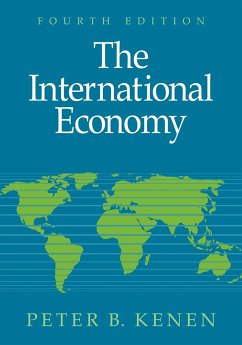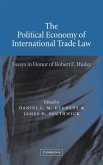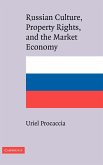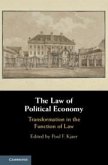This text is a rigorous introduction to international economics for upper-level undergraduates and above. The first half examines the causes and effects of international trade, how tariffs and other trade policies affect the gains from trade, and the ways in which governments try collectively to regulate those policies. The second half deals with monetary matters - the behavior of exchange rates, how trade and capital flows affect the functioning of monetary and fiscal policies, the causes and management of currency crises, and the new European Monetary Union (EMU). This fourth edition assesses the outcome of the Uruguay Round of trade negotiations, the work of the new World Trade Organization (WTO), and the challenges posed by regional trade blocs. It surveys recent theoretical work on currency crisis, examines recent crises in emerging-market countries and the role of the International Monetary Fund (IMF), and appraises innovations in exchange-rate arrangements, including the EMU and the use of currency boards by emerging-market countries. A problem set follows each chapter.
Table of contents:
Part I. Introduction: 1. The nation as an economic unit; Part II. International Trade and Policy: 2. Comparative advantage and the gains from trade; 3. Economic efficiency and comparative advantage; 4. Factor endowments and comparative advantage; 5. Factor substitution and a modified Ricardian model; 6. Factor substitution and the Heckscher-Ohlin model; 7. Imperfect competition and international trade; 8. Trade and factor movements; 9. Instruments and uses of trade policy; 10. The evolution of trade policy; 11. The future of the trading system; Part III. International Monetary Theory and Policy: 12. The balance of payments and foreign exchange market; 13. Incomes and the current account; 14. Exchange rates and the current account; 15. Interest rates and the capital account; 16. Expectations, exchange rates, and the capital account; 17. Stocks, flows, and monetary equilibrium; 18. Asset markets, exchange rates, and economic policy; 19. The evolution of the monetary system; 20. The future of the monetary system.
This text is an introduction to international economics. The first half examines the causes and effects of international trade, how tariffs and other trade policies affect the gains from trade, and the ways in which governments try collectively to regulate those policies. The second half deals with monetary matters - the behavior of exchange rates and how trade and capital flows affect the functioning of monetary and fiscal policies.
This text is a rigorous introduction to international economics for upper-level undergraduates and above.
Table of contents:
Part I. Introduction: 1. The nation as an economic unit; Part II. International Trade and Policy: 2. Comparative advantage and the gains from trade; 3. Economic efficiency and comparative advantage; 4. Factor endowments and comparative advantage; 5. Factor substitution and a modified Ricardian model; 6. Factor substitution and the Heckscher-Ohlin model; 7. Imperfect competition and international trade; 8. Trade and factor movements; 9. Instruments and uses of trade policy; 10. The evolution of trade policy; 11. The future of the trading system; Part III. International Monetary Theory and Policy: 12. The balance of payments and foreign exchange market; 13. Incomes and the current account; 14. Exchange rates and the current account; 15. Interest rates and the capital account; 16. Expectations, exchange rates, and the capital account; 17. Stocks, flows, and monetary equilibrium; 18. Asset markets, exchange rates, and economic policy; 19. The evolution of the monetary system; 20. The future of the monetary system.
This text is an introduction to international economics. The first half examines the causes and effects of international trade, how tariffs and other trade policies affect the gains from trade, and the ways in which governments try collectively to regulate those policies. The second half deals with monetary matters - the behavior of exchange rates and how trade and capital flows affect the functioning of monetary and fiscal policies.
This text is a rigorous introduction to international economics for upper-level undergraduates and above.









